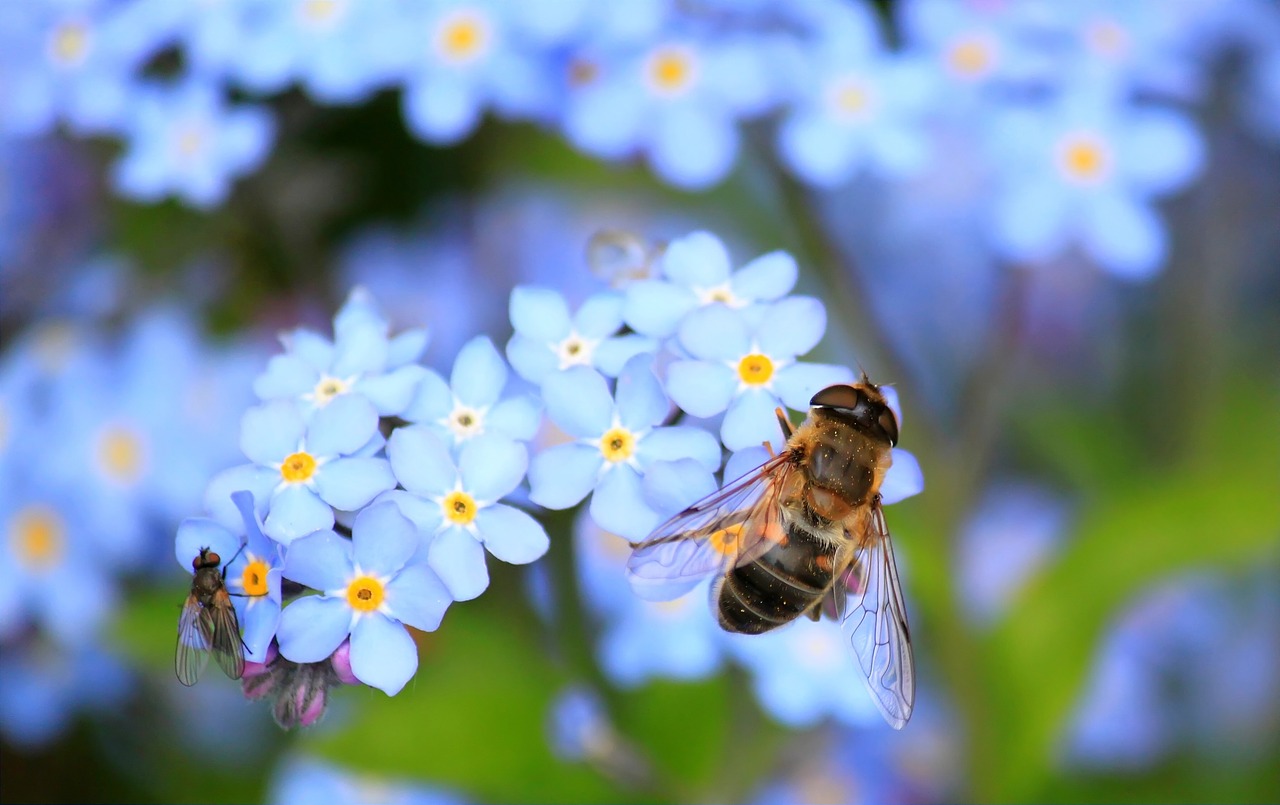Did you know that so-called pollinators insects guarantee the abundance and quality of our crops? Indeed, these little creatures ensure the reproduction of the plant species and flowering plants. Basically, they kickstart the production of seeds, fruits, vegetables, cereals. Hence, it is easy to understand concerns when these families of insects are threatened of extinction. Ecological preservation is certainly a given but matters do get worse when it is the economy of a whole region that is in difficulty in the face of dwindling reserves.
What are these pollinating insects?
Hymenoptera which are bees, bumblebees, hornets and wasps belong to the large family of pollinators. We can also mention ladybirds, beetles or rose chafers as well as noble oedemas, from the beetle family. As for hoverflies, which are Diptera, in addition to pollinating, their females lay larvae that feed on aphids. They are therefore ‘enablors’ of our crops since they protect them from other, harmful insects. Among the family of excellent pollinators, there are also particular branches of butterflies such as the thistle tortoise and the moro-sphinx.
Although a simple breath of wind actively participates in the pollination process, it is the insects that do most of the work, both in quality and quantity. They feed on the nectar: they gather pollen from the flower, cover themselves with pollen which they then deposit on the next flower. The flowers pollinated are often deliciously fragrant and very colorful. Their nectar, is often of exceptional quality.
Bee hives also do marvels
Quick note on this extraordinary product of mother nature – It provides useful materials such as beeswax, honey and royal jelly. We haven’t even mentioned propolis which has proven medicinal properties. The bees are organized in colonies: The queen’s mission is to lay eggs and multiply the colonies. Worker bees are females but are not able to reproduce. They do all the work in the hive and they control most of what goes on inside. Their duties include housekeeping, feeding the queen, drones and larvae, collecting pollen and nectar, and making beeswax. Meanwhile, the males ensure the fertilization of the queen and the maintenance of the species. In their own way, they are indeed very sexists!
Unfortunately, they are also in grave danger as scientists are reporting increasing cases of a phenomenon known as the Colony Collapse Disorder. An abnormality whereby the majority of worker bees disappear, leaving behind the queen, plenty of food, and a few nurse bees to care for the remaining immature bees.
Pollinators: the main causes of their disappearance
Human activities definitely played a part in the origin of this phenomenon. The list is long: Urbanization and pollution, intensive use of pesticides and insecticides which are toxic plant protection products. Climate change and the gradual scarcity of flowering plants also represents major threats.
We, humans, do have the tendency to consider all insects as harmful. Their extermination is often radical with smoke bombs, especially in regions where the safeguard of the population against tropical diseases (dengue fever, yellow fever, malaria and chikungunya transmitted by mosquitoes) is at the top of the agenda. This undiscriminating approach to insect eradication has had disastrous effects to biodiversity.
How to revive the phenomenon of natural pollination?
Certainly, some farmers and horticulturists can remedy to this situation by resorting to manual pollination. Experts in the agricultural field are developing hybrid products based on pollen and pistils. However, the abundance and variety of the harvest is not as qualitative as during natural pollination. In addition, the process is generally done in a greenhouse, following a more or less artificial cultivation method.
The best solution would therefore be to reduce the human footprint on the environment as a whole. In order for pollination to effectively ensure the maintenance and balance of biodiversity, chemical treatments should be banned because they weaken the immunity systems of these insects. It is also necessary to reduce the stress of the latter, to increase the diversity of floral species, to extend the surface of wild areas. We can make insect hotels ourselves or hire a local craftsman to make one. As for the survival of bees, there are definitely small first steps that could be entertained first. For a start, we could easily stop ourselves from not striking the first bee that lands on our desk. Why not also create and install hives to accommodate them in our own garden?
